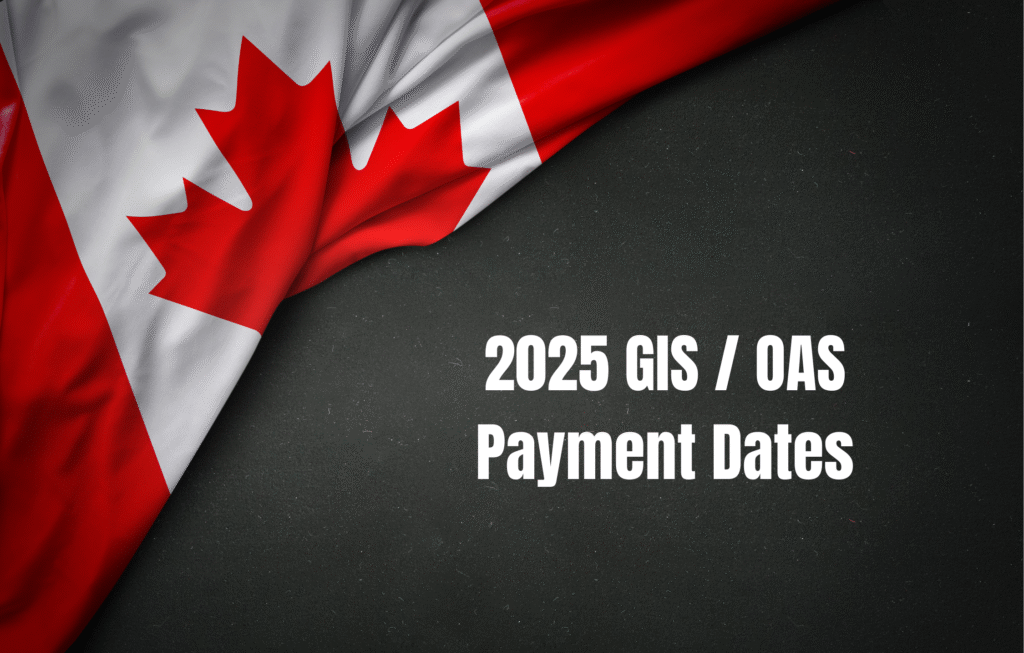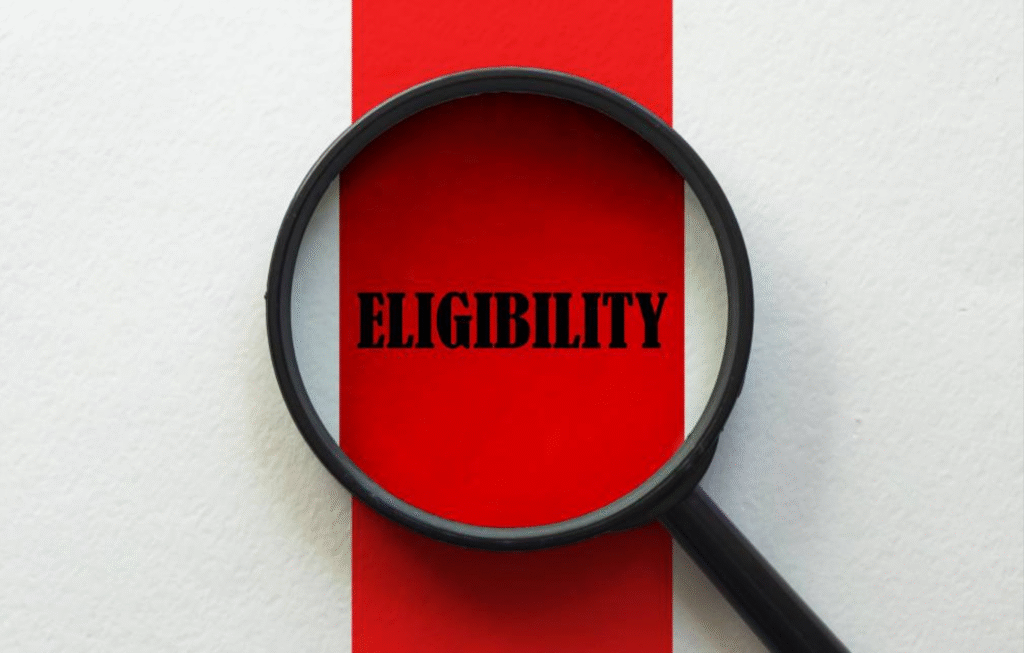What is GIS (Guaranteed Income Supplement)?
The Guaranteed Income Supplement (GIS) is a monthly non‑taxable benefit provided by the Canadian federal government to low‑income seniors who are already receiving Old Age Security (OAS).
GIS is designed to top up the monthly income of seniors whose retirement income is too low to cover basic needs on its own. The exact GIS amount depends on:
- Your income (and, if applicable, your spouse/common‑law partner’s income) from the prior year
- Your marital status
- Whether your spouse receives OAS or any other allowances
GIS payments are typically made at the same time as OAS payments (i.e. on the OAS payment schedule).
2025 GIS / OAS Payment Dates

Because GIS payments follow the Old Age Security (OAS) schedule, here are the 2025 dates when OAS + GIS (and related benefits) will be deposited:
- January 29, 2025
- February 26, 2025
- March 27, 2025
- April 28, 2025
- May 28, 2025
- June 26, 2025
- July 29, 2025
- August 27, 2025
- September 25, 2025
- October 29, 2025
- November 26, 2025
- December 22, 2025
If a scheduled date falls on a weekend or holiday, payments are generally made the previous business day.
So, for example, the GIS payment for May 2025 will be on May 28, 2025 (the same day as OAS).
Amounts & Thresholds — How Much You Could Get
Maximum GIS (for July–September 2025 quarter)
For the July to September 2025 period, the maximum GIS payments are (for those who qualify) as follows:
- If single, widowed, or divorced: up to $1,097.75 / month
- If married/common-law, spouse receives full OAS: lower maximum, depending on joint income
These figures are adjusted quarterly based on inflation, via the Consumer Price Index (CPI).
Income Thresholds (eligibility cut-offs)
To receive GIS, your (or your household’s) income must remain below certain thresholds. For example:
- If you are single, widowed or divorced, your net income must be below $22,272 (for the July‑September 2025 quarter)
- If you have a spouse/common-law partner, the combined income thresholds depend on whether your spouse also receives OAS, or receives an Allowance, etc.
Note: OAS, GIS, Allowance, or Allowance for the Survivor payments are not included as income when determining eligibility.
The government updates these thresholds every January, April, July, and October to reflect inflation.
Eligibility Criteria: Who Qualifies for GIS?

To qualify for GIS, you must meet all of the following general criteria:
- Be age 65 or older
- Live in Canada (be a resident) when the benefit payment is made and during the benefit period
- Receive the Old Age Security (OAS) pension
- Have income below the applicable thresholds (as discussed above)
- If you have a spouse/common-law partner, your combined income must be within acceptable limits, depending on whether they receive OAS or other benefits
Also be aware:
- If you are a sponsored immigrant who has been in Canada fewer than 10 years after age 18, there are special rules about GIS eligibility under “sponsorship” status.
- You may have to apply for GIS under certain circumstances (even though many are auto-enrolled) — see next section.
How to Apply for GIS (or Confirm Eligibility)
- Many seniors are automatically enrolled in GIS when they apply for OAS, or shortly after turning 65, if they meet the income criteria.
- You must apply manually in certain cases, such as:
- If you were never automatically enrolled
- If the letter sent to you is incorrect
- If you are already receiving OAS and never applied for GIS
- To apply:
- Use your My Service Canada Account (MSCA) to apply online (recommended).
- Or, use paper forms: Application for the OAS Pension and GIS (ISP‑3550) or Statement of Income (ISP‑3025) for GIS alone.
- Send certified copies of required documents (proofs of income, marital status, residency, etc.).
- After applying, you’ll receive a letter telling you:
- Whether the application is approved
- The monthly amount you’ll receive
- When your first payment starts
- Any back payments owing (subject to rules)
- If you disagree with a decision, you can request a review (by Service Canada) or appeal to the Social Security Tribunal.
Maintaining GIS / Avoiding Interruptions

To continue receiving GIS without disruption:
- File your tax return every year on time. GIS eligibility and payment amounts are reassessed annually based on your previous year’s net income. If you fail to file, your GIS benefits could stop or be reduced.
- Report changes in your income or circumstances (e.g. your marital status, pension income, etc.) so GIS calculations remain accurate.
- Keep banking / address information up to date — use direct deposit to reduce delays.
- Understand that GIS is topped with OAS in a single, combined payment.
- If you are working or self‑employed while receiving GIS, part of that income may reduce your GIS. However, up to certain amounts (e.g. first $5,000 of employment income) may not reduce GIS.
- Be aware that if inflation is negative, GIS amounts won’t be reduced — they only go up or stay constant.
Sample Walkthroughs & Examples
- Single senior with low income
Suppose you are 70 years old, live alone, receive OAS, and your total income from other sources last year was low (say $15,000). You may qualify for near‑maximum GIS (e.g. ~$1,097.75 per month in July–Sept 2025) if your income remains under the threshold. - Couple, both receiving OAS
If both you and your spouse receive OAS, your combined income must be under the allowed threshold (e.g. less than ~$29,424) to get GIS benefits — and your GIS amount will be split based on rules and household income. - Working while receiving GIS
If you have a part-time job or self-employment income, your GIS may be partially reduced — but the first small amount might be exempt from reduction (as per guidelines).
What to Watch Out For / Common Issues
- Missed tax filing is a major cause of payments being stopped. GIS relies on your previous year’s income being filed with CRA.
- Late applications — if you apply after age 65 or after OAS, you may not receive retroactive payments beyond some limits.
- Over-income — if your income goes above thresholds, GIS may be reduced or cut.
- Change in marital status or spousal income can affect your GIS amount mid-year.
- Residency issues or sponsorship rules for immigrants may complicate eligibility for GIS.
- Not using direct deposit may cause delays or lost cheques.
- Inflation adjustments — amounts may shift in January, April, July, October.
Final Thoughts & Tips
- If you’re turning 64 or 65 soon, start planning ahead and check if you’ll need to file a GIS application.
- Use the OAS / GIS Benefits Estimator on Canada.ca to get a rough idea of what your entitlement might be.
- Always keep income and personal information updated with Service Canada.
- Make sure your tax returns are filed timely every year to avoid losing benefits.
- If you think you qualify but did not receive a GIS letter or payment, check your “My Service Canada” account or contact Service Canada.
FAQs
1. What is the GIS in Canada?
The GIS is a monthly non-taxable benefit for low-income seniors who already receive Old Age Security (OAS), helping supplement their retirement income.
2. Who qualifies for GIS payments?
You must be 65+, receive OAS, live in Canada, and have income below government-set thresholds, which vary by marital status and household income.
3. What are the 2025 GIS payment dates?
Payments are made monthly on the same day as OAS. For example, May 2025 GIS is paid May 28, 2025. Full list includes 12 dates.
